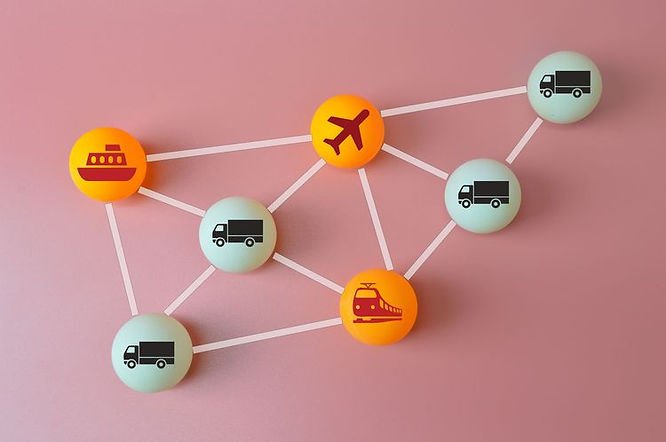E-commerce shipping is a crucial aspect of any online business, as it can greatly impact customer satisfaction and overall success. Small businesses, in particular, need to develop efficient and cost-effective shipping strategies to stay competitive and meet customer expectations. By selecting the right carriers, offering multiple shipping options, optimizing packaging, and leveraging fulfillment centers or shipping software, small businesses can streamline their shipping process, enhance customer experience, and promote growth. In this article, we will discuss the top e-commerce shipping strategies for small businesses to help you create a successful and sustainable shipping strategy.
Top E-commerce Shipping Strategies for Small Businesses
- Choose the right shipping carriers: Select the shipping carriers that best suit your business needs, based on their service quality, shipping rates, and delivery speed. Popular carriers include USPS, UPS, FedEx, and DHL. Consider using a shipping comparison tool to find the best option for each order.
- Offer multiple shipping options: Providing customers with various shipping options can help improve customer satisfaction. Offer different shipping speeds (standard, express, overnight) and carriers, so customers can choose the method that best fits their needs and budget.
- Utilize a fulfillment center or third-party logistics (3PL): Outsourcing order fulfillment to a third-party provider can help streamline your shipping process, especially during peak seasons. Fulfillment centers or 3PLs can help manage inventory, packaging, shipping, and returns, allowing you to focus on other aspects of your business.
- Implement a shipping strategy: Determine if you’ll offer flat-rate shipping, free shipping, or real-time carrier rates. Free shipping can be an attractive incentive for customers, but make sure to factor the cost into your product pricing. Alternatively, flat-rate shipping simplifies the process for customers and can encourage larger orders.
- Optimize packaging: Using the right packaging can help save on shipping costs and reduce the environmental impact. Use lightweight and eco-friendly materials, and consider the size and shape of your packages. Custom packaging can also help improve brand recognition.
- Use shipping software: Shipping software solutions can help automate the shipping process by generating shipping labels, tracking numbers, and handling order management. These tools can also help you compare carrier rates and streamline your fulfillment process.
- Offer international shipping: Expanding to international markets can help increase your customer base and revenue. However, consider the additional costs, taxes, and regulations when shipping internationally. Partner with carriers experienced in international shipping to ensure a smooth process.
- Create a clear return policy: A customer-friendly return policy can help increase customer satisfaction and encourage repeat purchases. Make your return policy easily accessible on your website, and consider offering free returns or exchanges to improve customer experience.
- Monitor and optimize: Regularly analyze your shipping data to identify trends and areas for improvement. Adjust your shipping strategy as needed, and consider negotiating with carriers for better rates as your business grows.
- Communicate with customers: Keep customers informed about their order status, shipping options, and any delays or issues. Providing tracking information and being responsive to customer inquiries can help build trust and customer loyalty.
Implementing effective e-commerce shipping strategies is essential for small businesses to remain competitive in the online market. By carefully choosing carriers, offering various shipping options, utilizing fulfillment centers or shipping software, and continuously monitoring and optimizing their shipping processes, small businesses can enhance customer satisfaction and build brand loyalty. A well-rounded shipping strategy not only improves the overall customer experience but also contributes to the long-term growth and success of your business. By following these top e-commerce shipping strategies, small businesses can navigate the complexities of shipping and create a sustainable foundation for their online presence.
Choose The Right Shipping Carriers

Choosing the right shipping carriers is a crucial aspect of an e-commerce shipping strategy for small businesses. It involves evaluating different carriers to find the ones that align with your business needs, customer preferences, and budget constraints. Here’s a more in-depth explanation of the factors to consider when selecting shipping carriers and how to use a shipping comparison tool effectively.
Service Quality
The reliability and professionalism of a carrier are essential in ensuring timely deliveries and preventing lost or damaged packages. Research each carrier’s reputation, read customer reviews, and consider their overall track record to gauge their service quality.
Shipping Rates
Shipping costs can significantly impact your bottom line and customer satisfaction. Compare carrier pricing based on the size and weight of your packages, delivery distance, and shipping speed. Some carriers offer discounted rates for small businesses or high-volume shippers, so explore these options to save costs.
Delivery Speed
Customers often expect fast delivery times, so consider carriers that provide various shipping speeds to accommodate different customer needs. Faster delivery options may come with higher costs, but they can also lead to higher customer satisfaction and repeat business.
Additional Services
Some carriers offer value-added services such as package insurance, tracking, or signature confirmation. Assess the importance of these services for your business and factor them into your decision-making process.
International Shipping
If your business plans to ship internationally, look for carriers with experience and expertise in handling international shipments. They should be familiar with customs regulations, duties, and taxes to ensure a smooth shipping process.
Using A Shipping Comparison Tool
Shipping comparison tools can help you analyze multiple carriers side-by-side, making it easier to determine the best option for each order. These tools typically allow you to input package details (weight, dimensions, destination) and generate a list of available shipping services and rates from various carriers.
Benefits Of Using A Shipping Comparison Tool Include:
Saving Time And Effort
Quickly compare shipping options without manually researching each carrier’s rates and services.
Cost Savings
Identify the most cost-effective shipping option for each order, potentially lowering your overall shipping expenses.
Enhanced Customer Experience
Offer customers a range of shipping options, allowing them to choose the one that best meets their needs and preferences.
By taking the time to evaluate different carriers and using a shipping comparison tool, you can make informed decisions that optimize your e-commerce shipping strategy, ultimately leading to increased customer satisfaction and business growth.
Offer Multiple Shipping Options

Offering multiple shipping options is a key element of a successful e-commerce shipping strategy, as it caters to diverse customer preferences and expectations. By providing various shipping speeds and carriers, businesses can enhance customer satisfaction, leading to increased loyalty and repeat purchases. Here’s a more in-depth explanation of the benefits and considerations when offering multiple shipping options:
Catering To Customer Preferences
Different customers have different priorities when it comes to shipping. Some may prioritize lower costs, while others may value faster delivery times. By offering a variety of shipping options, you can accommodate these varying preferences and create a positive shopping experience for a wider range of customers.
Competitive Advantage
Many online shoppers compare shipping options and costs when deciding where to make their purchases. By providing multiple shipping options, you can differentiate your business from competitors and potentially capture a larger market share.
Balancing Cost And Speed
Offering a range of shipping speeds, such as standard, express, and overnight, allows customers to choose the option that best fits their needs and budget. For instance, some customers may be willing to pay a premium for expedited shipping, while others may prefer more economical options with longer delivery times.
Carrier Diversity
Including multiple carriers in your shipping strategy can provide additional benefits, such as access to different service offerings, better coverage in certain geographic areas, or more competitive rates. This can help you better cater to the needs of your customers and ensure reliable delivery.
Customization And Flexibility
Providing multiple shipping options allows customers to tailor their shipping experience based on their individual needs, such as delivery timelines or the level of tracking and insurance they require. This level of customization can lead to increased customer satisfaction and trust in your business.
Factors To Consider When Implementing Multiple Shipping Options
Communication
Display available shipping options on your website, including the associated costs and delivery times, to help customers make informed decisions.
Order Processing
Ensure your order processing system can accommodate various shipping options and accurately calculate shipping costs and delivery times during checkout.
Inventory Management
Make sure your inventory management system can handle the different shipping options and associated order processing times.
Carrier Partnerships
Establish strong relationships with multiple carriers to secure the best rates and service quality for your business.
By offering multiple shipping options, small businesses can improve customer satisfaction, cater to diverse customer needs, and create a competitive advantage in the e-commerce market.
Utilize A Fulfillment Center Or Third-Party Logistics (3PL)

Utilizing a fulfillment center or third-party logistics (3PL) provider can be a strategic move for small businesses looking to streamline their shipping process and improve overall efficiency. Outsourcing order fulfillment to a third-party provider can offer several advantages, particularly during peak seasons when order volumes may surge. Here’s a more in-depth explanation of how fulfillment centers or 3PLs can benefit your business:
Scalability
One of the primary advantages of using a fulfillment center or 3PL is their ability to scale with your business. As your order volume increases or fluctuates, these providers can quickly adapt to meet the growing demand, allowing you to focus on other aspects of your business without worrying about fulfillment bottlenecks.
Inventory Management
Fulfillment centers and 3PLs often offer inventory management services, which can help you keep track of stock levels, monitor product movement, and optimize storage space. Effective inventory management can reduce the risk of stockouts, overstocking, or delays in order processing.
Packaging And Shipping
Outsourcing your order fulfillment means that the provider will handle the packaging and shipping process. This can result in cost savings, as providers typically have access to discounted shipping rates and can leverage economies of scale to reduce packaging costs. Additionally, they may have expertise in packaging best practices, which can reduce the likelihood of damaged goods during transit.
Returns Management
Handling returns can be time-consuming and costly. Many fulfillment centers and 3PLs offer returns management services, streamlining the process for your business and ensuring a smooth experience for your customers.
Expertise And Technology
Fulfillment centers and 3PLs often have specialized knowledge and technology in place to optimize the order fulfillment process. This can include warehouse management systems, real-time inventory tracking, and advanced shipping software, which can help improve efficiency and reduce errors.
Geographical Advantages
By partnering with a fulfillment center or 3PL with multiple locations, you can strategically store inventory closer to your customers. This can lead to faster delivery times and reduced shipping costs, improving customer satisfaction and potentially increasing sales.
When Considering Outsourcing To A Fulfillment Center Or 3PL, Keep The Following Factors In Mind:
Cost
Evaluate the fees associated with the services offered by the provider, including storage, packaging, shipping, and returns management. Ensure that the costs align with your business budget and goals.
Service Quality
Research the reputation and performance of the fulfillment center or 3PL to ensure they can provide a high level of service and meet your business needs.
Flexibility And Customization
Assess the provider’s ability to adapt to your specific requirements, such as offering custom packaging or accommodating unique shipping needs.
By utilizing a fulfillment center or third-party logistics provider, small businesses can streamline their shipping process, enhance efficiency, and focus on other aspects of their business, ultimately promoting growth and success in the e-commerce space.
Implement A Shipping Strategy

Implementing a well-defined shipping strategy is essential for small businesses to ensure a smooth and cost-effective shipping process while meeting customer expectations. There are several shipping strategies to choose from, including flat-rate shipping, free shipping, and real-time carrier rates. Here’s a more in-depth explanation of each strategy and the factors to consider when selecting the best option for your business:
Flat-Rate Shipping
This strategy involves charging a single, predetermined rate for shipping, regardless of the package size, weight, or destination. Flat-rate shipping simplifies the process for customers, as they know the shipping cost upfront. It can also encourage larger orders, as customers may be inclined to add more items to their cart to take advantage of the fixed shipping rate. To effectively implement flat-rate shipping, first, calculate your average shipping cost to determine a fair and sustainable flat rate. Second, evaluate if your flat rate is competitive with industry standards and other e-commerce businesses. Lastly, communicate your flat-rate shipping policy to customers on your website.
Free Shipping
Offering free shipping can be an attractive incentive for customers, potentially increasing conversion rates and customer loyalty. However, it’s essential to factor the associated costs into your product pricing to ensure profitability. To implement a free shipping strategy, first, analyze your product margins and shipping costs to determine if you can absorb the costs while maintaining profitability. Second, set a minimum order threshold for free shipping to encourage larger orders and help offset the shipping costs. Lastly, use promotional periods for free shipping to boost sales during slow seasons or to move excess inventory.
Real-Time Carrier Rates
This strategy involves using real-time shipping rates from carriers, based on factors such as package size, weight, and destination. Real-time carrier rates provide customers with accurate shipping costs and allow them to choose their preferred carrier and delivery speed. To implement real-time carrier rates, first, integrate carrier APIs or use a shipping software solution to obtain real-time shipping rates during the checkout process. Second, ensure your website and order processing system can handle multiple carriers and shipping options. Lastly, display available shipping options and costs to customers during the checkout process.
When selecting a shipping strategy, consider factors such as your target market, product types, average order value, and the competitive landscape. Each shipping strategy has its pros and cons, so it’s essential to weigh these factors and choose the best option for your business. A well-implemented shipping strategy can lead to increased customer satisfaction, higher conversion rates, and improved profitability in the long run.
Optimize Packaging

Optimizing packaging is a crucial aspect of a successful e-commerce shipping strategy, as it can help save on shipping costs, reduce environmental impact, and enhance brand recognition. Here’s a more in-depth explanation of how to optimize packaging for your small business:
Lightweight Materials
Using lightweight packaging materials can significantly reduce shipping costs, as carriers often charge based on the dimensional weight of the package. Consider using materials like corrugated cardboard, padded envelopes, or poly mailers, which are light yet durable enough to protect your products during transit.
Eco-Friendly Materials
Choosing environmentally friendly packaging materials can help reduce your business’s carbon footprint and cater to environmentally conscious consumers. Opt for materials such as recycled or sustainably sourced cardboard, biodegradable packing peanuts, or compostable mailers. Communicate your eco-friendly packaging initiatives on your website and marketing materials to appeal to environmentally conscious customers.
Package Size And Shape
Optimizing the size and shape of your packages can result in significant cost savings and reduce waste. Use packaging that fits the product snugly, eliminating the need for excess filler material and minimizing the package’s overall dimensions. Carriers often charge based on the package’s size, so reducing the dimensions can help save on shipping costs.
Custom Packaging
Investing in custom packaging can enhance brand recognition and improve the overall customer experience. Custom packaging can include branded boxes, tape, or tissue paper, which can create a memorable unboxing experience for your customers. Although custom packaging may come with higher upfront costs, it can boost your brand image and lead to increased customer loyalty.
Protective Packaging
Ensuring that your products are well-protected during transit is essential to minimize damage, returns, and customer dissatisfaction. Use appropriate protective materials such as bubble wrap, foam inserts, or air pillows to cushion your products and prevent damage during shipping.
Packaging Efficiency
Streamline your packaging process by using standardized box sizes or packaging materials that are easy to assemble. This can help reduce the time spent on packaging, improve efficiency, and lower labor costs.
When optimizing your packaging, consider factors such as your product types, target market, and shipping costs. By using the right packaging materials, sizes, and shapes, and investing in custom packaging, you can save on shipping costs, reduce environmental impact, and enhance brand recognition, ultimately contributing to a successful e-commerce shipping strategy.
Use Shipping Software

Using shipping software is a valuable strategy for small e-commerce businesses to automate and streamline their shipping processes. These software solutions offer various features and benefits that can save time, reduce errors, and improve overall efficiency. Here’s a more in-depth explanation of how shipping software can benefit your business:
Shipping Label Generation
Shipping software automates the process of creating shipping labels, eliminating the need for manual input and reducing the likelihood of errors. These labels typically include important information such as the recipient’s address, package weight, and dimensions, as well as a tracking number and carrier-specific barcodes.
Tracking Number Generation
Shipping software automatically generates tracking numbers for each shipment, allowing you to provide customers with real-time updates on their order status. This can lead to improved customer satisfaction and help reduce inquiries related to order tracking.
Carrier Rate Comparison
Shipping software often includes features that allow you to compare carrier rates and delivery times based on package details and destination. This can help you identify the most cost-effective and efficient shipping options for each order, saving you money and ensuring timely deliveries.
Order Management
Shipping software can integrate with your e-commerce platform or inventory management system to centralize and streamline order management. This includes features such as importing orders, updating inventory levels, and synchronizing order status across platforms.
Batch Processing
Shipping software enables you to process multiple orders simultaneously, improving efficiency and reducing the time spent on shipping tasks. Batch processing can include generating shipping labels, creating pick lists, and updating tracking information for multiple orders at once.
Shipping Analytics And Reporting
Many shipping software solutions offer analytics and reporting features that provide valuable insights into your shipping performance. This can help you identify trends, monitor costs, and make data-driven decisions to optimize your shipping strategy.
Customization And Integration
Shipping software typically offers a high level of customization and integration with other business tools, such as e-commerce platforms, inventory management systems, and accounting software. This can help create a seamless and efficient workflow, reducing manual data entry and the potential for errors.
What To Consider While Choosing Shipping Software:
Cost
Evaluate the pricing plans and features offered by various shipping software solutions to ensure they align with your business needs and budget.
Compatibility
Ensure the shipping software can integrate with your existing e-commerce platform, inventory management system, or other business tools.
Ease Of Use
Select a shipping software solution with a user-friendly interface and robust customer support to ensure a smooth implementation and ongoing use.
By implementing shipping software, small e-commerce businesses can automate and streamline their shipping processes, ultimately leading to increased efficiency, reduced errors, and improved customer satisfaction.
Offer International Shipping

Offering international shipping is an effective way for small e-commerce businesses to expand their customer base and increase revenue by tapping into new markets. However, it’s crucial to consider the additional costs, taxes, and regulations associated with international shipping to ensure a smooth process. Here’s a more in-depth explanation of the factors to consider when offering international shipping:
Shipping Costs
International shipping can be more expensive than domestic shipping due to factors such as distance, package weight, and dimensions. It’s essential to research the shipping rates of various carriers and determine if the additional costs can be absorbed by your business or passed on to customers without negatively impacting sales.
Taxes And Duties
Shipping products internationally may involve import taxes, duties, or customs fees, which vary by country and product type. To avoid unexpected costs and delays, familiarize yourself with the tax and duty regulations for each destination country and communicate these costs to your customers during the checkout process.
Customs Regulations
Each country has its customs regulations and requirements, which can include specific documentation, packaging, or labeling. Ensure that you comply with these regulations to avoid shipment delays, additional fees, or potential confiscation of goods.
Carrier Selection
Partnering with carriers experienced in international shipping is crucial to ensure a smooth process. Carriers such as USPS, UPS, FedEx, and DHL have extensive experience and infrastructure for international shipping, allowing them to handle customs clearance, navigate complex regulations, and deliver packages efficiently.
Delivery Times
International shipping can take longer than domestic shipping due to factors such as customs clearance and distance. Set realistic delivery time expectations for your customers to avoid dissatisfaction or confusion.
Returns And Exchanges
Handling returns and exchanges can be more challenging and costly when shipping internationally. Develop a clear return policy for international orders, considering factors such as return shipping costs, customs fees, and processing times.
Currency And Payment Methods
Offering multiple currency options and international payment methods can help facilitate transactions with customers from different countries. Ensure your e-commerce platform supports international currencies and payment options, such as credit cards, PayPal, or other localized payment methods.
Localization
To effectively reach international customers, consider localizing your website and marketing materials by translating content into different languages and adapting to local preferences and cultural nuances.
Legal Considerations
Familiarize yourself with the laws and regulations in the countries you plan to ship to, including product restrictions, import/export regulations, and consumer protection laws.
When offering international shipping, it’s essential to carefully research and plan for the additional costs, taxes, and regulations involved. By partnering with experienced carriers and taking the necessary steps to ensure compliance with international laws and customs, small e-commerce businesses can successfully expand their reach and tap into new markets.
Create A Clear Return Policy

Creating a clear and customer-friendly return policy is essential for small e-commerce businesses, as it can significantly impact customer satisfaction, encourage repeat purchases, and build trust with your customers. Here’s a more in-depth explanation of how to create a clear return policy and the factors to consider:
Policy accessibility
Make sure your return policy is easily accessible on your website, typically in the footer or a dedicated page linked in the main menu. Communicate your policy on product pages, during the checkout process, and in order confirmation emails to ensure customers are aware of it before making a purchase.
Timeframe
Specify the timeframe within which customers can initiate a return or exchange. Common timeframes range from 14 to 30 days from the date of receipt, but the duration may vary depending on the product type and industry.
Eligibility
Clearly define the conditions under which a product is eligible for return or exchange, such as unused, unopened, or in original packaging. Specify any exceptions or restrictions, such as items that cannot be returned due to hygiene concerns or custom-made products.
Return Shipping
Consider whether you’ll cover the cost of return shipping or require customers to pay for it themselves. Offering free returns can improve customer experience and encourage repeat purchases, but be sure to factor in the associated costs when setting your product pricing.
Refund Method
Outline how customers will be refunded for returned items, whether through the original payment method or store credit. Specify the expected processing time for refunds and any applicable restocking fees.
Exchange Process
Detail the process for exchanging products, including any associated shipping costs, eligibility requirements, and timeframes.
Return Instructions
Provide clear instructions on how customers should initiate a return or exchange, including any required forms, packaging guidelines, and return shipping addresses.
Customer Support
Ensure customers have a point of contact for any questions or concerns related to returns and exchanges, such as a dedicated email address or phone number. Providing prompt and helpful customer support can help resolve issues and build trust with your customers.
Legal Requirements
Familiarize yourself with consumer protection laws and regulations in your jurisdiction, as these may dictate specific requirements for return policies, such as mandatory timeframes or conditions.
Monitor And Adapt
Regularly review your return policy and assess its effectiveness in terms of customer satisfaction and business costs. Be open to making adjustments as needed to improve customer experience and maintain profitability.
By creating a clear and customer-friendly return policy, small e-commerce businesses can foster trust with their customers, improve customer satisfaction, and encourage repeat purchases. Offering free returns or exchanges and providing easily accessible information on your website can further enhance the customer experience and contribute to the overall success of your business.
Monitor And Optimize

Monitoring and optimizing your shipping strategy is an essential part of running a successful e-commerce business. Regular analysis of your shipping data can help you identify trends, areas for improvement, and opportunities for cost savings. Here’s a more in-depth explanation of how to monitor and optimize your shipping strategy:
Data Collection
Gather data from your shipping software, e-commerce platform, or carrier accounts to analyze key shipping metrics. Some important data points to consider include shipping costs, delivery times, carrier performance, and the number of lost or damaged packages.
Data Analysis
Analyze your shipping data to identify trends and patterns, such as increased shipping costs during peak seasons, frequently delayed deliveries, or a high number of damaged packages. Use these insights to identify areas for improvement and adjust your shipping strategy accordingly.
Carrier Performance
Evaluate the performance of your shipping carriers in terms of delivery times, costs, and reliability. If a specific carrier consistently underperforms, consider exploring alternative carriers that may offer better service or more competitive rates.
Cost Optimization
Regularly review your shipping costs and look for opportunities to reduce expenses. This could include negotiating better rates with your carriers, optimizing your packaging to reduce dimensional weight, or offering more cost-effective shipping options to customers.
Delivery Times
Monitor your delivery times to ensure that your shipments are arriving within the expected timeframes. If you notice consistent delays, consider working with your carriers to resolve the issue or exploring alternative carriers that may provide faster delivery times.
Customer Feedback
Solicit customer feedback on their shipping experience, either through post-purchase surveys, online reviews, or direct communication. Use this feedback to identify areas for improvement and adjust your shipping strategy to better meet customer expectations.
Carrier Negotiation
As your business grows and your shipping volume increases, you may be able to negotiate better rates or service levels with your carriers. Regularly review your carrier agreements and consider renegotiating terms as your business needs evolve.
Shipping Technology
Stay informed about new shipping technologies or software solutions that could help streamline your shipping process, reduce costs, or improve customer experience. Implementing new technology can lead to significant efficiency gains and cost savings.
Test And Iterate
Continuously test different shipping strategies, carriers, or packaging materials to determine the most effective and cost-efficient approach. Regularly review your shipping performance and make data-driven adjustments to your strategy as needed.
By monitoring and optimizing your shipping strategy, you can identify areas for improvement, reduce costs, and enhance customer satisfaction. Regular analysis of your shipping data, carrier performance, and customer feedback can help you make informed decisions and adapt your shipping strategy to better meet the needs of your business and customers.
Communicate With Customers

Effective communication with customers is crucial in e-commerce, particularly when it comes to shipping and order fulfillment. Keeping customers informed about their order status, shipping options, and any potential delays or issues can help build trust, and customer loyalty, and improve overall customer satisfaction. Here’s a more in-depth explanation of how to communicate effectively with your customers regarding shipping:
Order Confirmation
Send an order confirmation email immediately after a customer places an order, which includes a summary of the purchased items, the estimated shipping time, and the selected shipping method. This helps to set expectations and provides customers with a record of their transactions.
Shipping Notifications
Notify customers when their order has been shipped by sending a shipping confirmation email that includes the tracking number and carrier information. This allows customers to follow their package’s progress and have a better sense of when to expect delivery.
Tracking Information
Provide customers with easy access to tracking information, either through a link in the shipping confirmation email or via a dedicated tracking page on your website. This can reduce the number of inquiries related to order status and increase customer satisfaction.
Shipping Options
Communicate the available shipping options, costs, and delivery times on your website, particularly on the product page and during the checkout process. This helps customers make informed decisions about which shipping method best suits their needs and budget.
Proactive Communication
If you encounter any issues or delays that may affect a customer’s order, proactively reach out to them via email or phone to explain the situation, apologize for the inconvenience, and provide an updated delivery estimate. Transparency and honesty can help maintain customer trust and prevent frustration.
Responsive Customer Support
Ensure that customers have a point of contact for any shipping-related inquiries, such as a dedicated email address, phone number, or live chat feature. Train your customer support team to handle shipping inquiries promptly, professionally, and empathetically.
Returns And Exchanges
Communicate your return and exchange policies on your website and in post-purchase communications. Provide step-by-step instructions on how to initiate a return or exchange, and offer support throughout the process to ensure a smooth experience for your customers.
Personalized Communication
Whenever possible, personalize your communications with customers, such as addressing them by name in emails and offering relevant shipping options based on their location. Personalized communication can help build rapport and make customers feel valued.
Solicit Feedback
Encourage customers to provide feedback on their shipping experience, either through post-purchase surveys, online reviews, or direct communication. Use this feedback to identify areas for improvement and adjust your shipping strategy accordingly.
By effectively communicating with customers about their order status, shipping options, and any potential delays or issues, small e-commerce businesses can build trust, increase customer loyalty, and enhance overall customer satisfaction. Providing tracking information, being responsive to customer inquiries, and proactively addressing any issues are key aspects of successful customer communication in the realm of shipping.
Implementing effective e-commerce shipping strategies is essential for small businesses looking to thrive in today’s competitive online marketplace. By selecting the right shipping carriers, offering multiple shipping options, utilizing fulfillment centers or 3PLs, developing a solid shipping strategy, optimizing packaging, employing shipping software, expanding to international markets, creating clear return policies, monitoring and optimizing your shipping process, and maintaining open communication with customers, small businesses can provide a seamless shipping experience that fosters customer satisfaction and loyalty. Regularly analyzing your shipping performance and staying adaptive to emerging trends and customer needs will help ensure the long-term success of your e-commerce business. Let’s begin right now!

